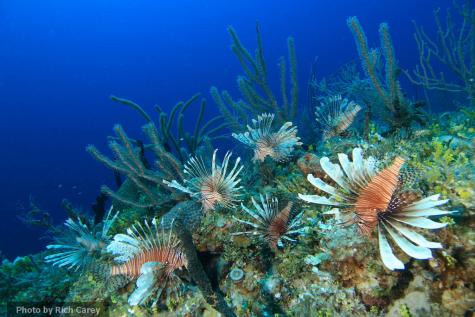|
From:TheBahamasWeekly.com International
The derby will award cash to the divers who collect the most lionfish, the largest fish and the smallest fish. A lionfish tasting in Palm Beach raised funds for the derby's purse and to equip more Bahamian fishermen with the nets and protective gloves needed to capture lionfish. The events are organized in cooperation with the Reef Environmental Education Foundation in Key Largo, a conservation group that recruits recreational divers to conduct surveys on the size and diversity of fish populations off the coasts of north and central America, the Caribbean and Hawaii. The situation for native marine life in the Bahamas is "pretty bleak," according to Lad Akins, special projects director for REEF. In waters there, nothing preys on the lionfish, because larger fish and sharks simply do not recognize it as a food source, Akins said. Its venomous barbs are part of the deterrent. "We may not have seen the wholesale extinctions of fish, but that's a possibility in the future," Akins said. While lionfish sightings are still relatively rare off the waters of Palm Beach County, reports of a few lionfish in the Bahamas in 2004 turned into an explosion about two years ago, according to Akins. Stephanie Green, a doctoral student at Simon Fraser University in Vancouver, said lionfish are becoming one of the most abundant fish of their size in the Bahamas. "They are now more abundant than native predators such as coney and graysby and red hind. What will happen through eating other species on the reef, they will likely be able to out-compete and exclude other species," Green said. She spent a recent week in the Bahamas and spent last summer there conducting research on the lionfish problem. Part of that research involves examining the contents of the lionfish's stomach. "We've found over 40 native species in their stomachs," Akins said. "We saw prey items up to half the size of the lionfish. We found both commercial and ecologically important species — including Nassau grouper and yellowtail snapper — and ecologically important species including cleaner species that serve a vital function on the reef. "There are a number of fish and crustaceans that serve as cleaners that pick parasites and clean wounds on fish. We found a number of those species in lionfish stomachs as well." REEF doesn't know how damaging the lionfish invasion will become for the rest of the region, but Akins said it could be "quite severe." Tim and Blair Givens, of Palm Beach, take their two daughters to the Bahamas two or three times a year in their 31-foot powerboat. Tim Givens said he's concerned that what has happened in the Bahamas will happen here. "It's probably only a matter of time until they start something up in other areas that have the food sources they are looking for," Givens said, noting that lionfish have been seen in waters well up the East Coast. Lindsay said the objective is to control the lionfish population in the Bahamas and keep it from posing a similar problem here. "There's a lot to do. There's a lot we can do." Lindsay said. "There's no panacea. There's no way we can wipe them all out. But we can locally control them. And hopefully we can acquire a taste for them — and that part is easy, I can say as someone who just ate them." For more information on the Lionfish Derby, contact lionfishderby@gmail.com . For more information about REEF, visit www.reef.org .
|
